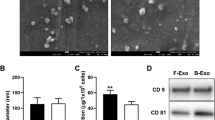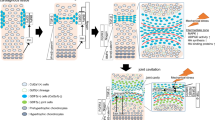Abstract
Cell differentiation is controlled by specific transcription factors. The functions and expression levels of these transcription factors are regulated by epigenetic modifications, such as histone modifications and cytosine methylation of the genome. In tendon tissue, tendon-specific transcription factors have been shown to play functional roles in the regulation of tenocyte differentiation. However, the effects of epigenetic modifications on gene expression and differentiation in tenocytes are unclear. In this study, we investigated the epigenetic regulation of tenocyte differentiation, focusing on the enzymes mediating histone 3 lysine 9 (H3K9) methylation. In primary mouse tenocytes, six H3K9 methyltransferase (H3K9MTase) genes, i.e., G9a, G9a-like protein (GLP), PR domain zinc finger protein 2 (PRDM2), SUV39H1, SUV39H2, and SETDB1/ESET were all expressed, with increased mRNA levels observed during tenocyte differentiation. In mouse embryos, G9a and Prdm2 mRNAs were expressed in tenocyte precursor cells, which were overlapped with or were adjacent to cells expressing a tenocyte-specific marker, tenomodulin. Using tenocytes isolated from G9a-flox/flox mice, we deleted G9a by infecting the cells with Cre-expressing adenoviruses. Proliferation of G9a-null tenocytes was significantly decreased compared with that of control cells infected with GFP-expressing adenoviruses. Moreover, the expression levels of tendon transcription factors gene, i.e., Scleraxis (Scx), Mohawk (Mkx), Egr1, Six1, and Six2 were all suppressed in G9a-null tenocytes. The tendon-related genes Col1a1, tenomodulin, and periostin were also downregulated. Consistent with this, Western blot analysis showed that tenomodulin protein expression was significantly suppressed by G9a deletion. These results suggested that expression of the H3K9MTase G9a was essential for the differentiation and growth of tenocytes and that H3K9MTases may play important roles in tendinogenesis.





Similar content being viewed by others
Abbreviations
- H3K9me1:
-
Mono-methylated lysine 9 at histone H3
- H3K9me2:
-
Di-methylated lysine 9 at histone H3
- H3K9MTase:
-
H3K9 methyltransferase
References
Asou Y, Nifuji A et al (2002) Coordinated expression of scleraxis and Sox9 genes during embryonic development of tendons and cartilage. J Orthop Res 20:827–833
Balemans MC, Ansar M et al (2014) Reduced Euchromatin histone methyltransferase 1 causes developmental delay, hypotonia, and cranial abnormalities associated with increased bone gene expression in Kleefstra syndrome mice. Dev Biol 386:395–407
Bittencourt D, Wu DY et al (2012) G9a functions as a molecular scaffold for assembly of transcriptional coactivators on a subset of glucocorticoid receptor target genes. Proc Natl Acad Sci USA 109:19673–19678
Black JC, Van Rechem C, Whetstine JR (2012) Histone lysine methylation dynamics: establishment, regulation, and biological impact. Mol Cell 48:491–507
Blackburn ML, Chansky HA et al (2003) Genomic structure and expression of the mouse ESET gene encoding an ERG-associated histone methyltransferase with a SET domain. Biochim Biophys Acta 1629:8–14
Docheva D, Hunziker EB, Fässler R, Brandau O (2005) Tenomodulin is necessary for tenocyte proliferation and tendon maturation. Mol Cell Biol 25:699–705
Dodge E, Kang -K et al (2004) Histone H3-K9 methyltransferase ESET is essential for early development. Mol Cell Biol 24:2478–2486
Fritsch L, Robin P et al (2010) A subset of the histone H3 lysine 9 methyltransferases Suv39h1, G9a, GLP, and SETDB1 participate in a multimeric complex. Mol Cell 37:46–56
Guerquin MJ, Charvet B et al (2013) Transcription factor EGR1 directs tendon differentiation and promotes tendon repair. J Clin Invest 123:3564–3576
Ideno H, Shimada A et al (2013) Predominant expression of H3K9 methyltransferases in prehypertrophic and hypertrophic chondrocytes during mouse growth plate cartilage development. Gene Expr Patterns 13:84–90
Inagawa M, Nakajima K et al (2013) Histone H3 lysine 9 methyltransferases, G9a and GLP are essential for cardiac morphogenesis. Mech Dev 130:519–531
Ito Y, Toriuchi N et al (2010) The Mohawk homeobox gene is a critical regulator of tendon differentiation. Proc Natl Acad Sci USA 107:10538–10542
Kamiunten T et al (2015) Coordinated expression of H3K9 histone methyltransferases during tooth development in mice. Histochem Cell Biol 143:259–266
Kim JK, Estève PO, Jacobsen SE, Pradhan S (2009) UHRF1 binds G9a and participates in p21 transcriptional regulation in mammalian cells. Nucleic Acids Res 37:493–505
Lee DY, Northrop JP, Kuo MH, Stallcup MR (2006) Histone H3 lysine 9 methyltransferase G9a is a transcriptional coactivator for nuclear receptors. J Biol Chem 281:8476–8485
Lehnertz B, Northrop JP et al (2010) Activating and inhibitory functions for the histone lysine methyltransferase G9a in T helper cell differentiation and function. J Exp Med 207:915–922
Lejard V, Blais F et al (2011) EGR1 and EGR2 involvement in vertebrate tendon differentiation. J Biol Chem 286:5855–5867
Ling BM, Bharathy N et al (2012) Lysine methyltransferase G9a methylates the transcription factor MyoD and regulates skeletal muscle differentiation. Proc Natl Acad Sci USA 109:841–846
Murchison ND, Price BA et al (2007) Regulation of tendon differentiation by scleraxis distinguishes force-transmitting tendons from muscle-anchoring tendons. Development 134:2697–2708
Nifuji A, Noda M (1999) Coordinated expression of noggin and bone morphogenetic proteins (BMPs) during early skeletogenesis and induction of noggin expression by BMP-7. J Bone Miner Res 14:2057–2066
Nishio H, Walsh MJ (2004) CCAAT displacement protein/cut homolog recruits G9a histone lysine methyltransferase to repress transcription. Proc Natl Acad Sci USA 101:11257–11262
O’Carroll D, Scherthan H et al (2000) Isolation and characterization of Suv39h2, a second histone H3 methyltransferase gene that displays testis-specific expression. Mol Cell Biol 20:9423–9433
Oshima Y, Sato K et al (2004) Anti-angiogenic action of the C-terminal domain of tenomodulin that shares homology with chondromodulin-I. J Cell Sci 117:2731–2744
Peters AH, O’Carroll D et al (2001) Loss of the Suv39h histone methyltransferases impairs mammalian heterochromatin and genome stability. Cell 107:323–337
Purcell DJ, Khalid O et al (2012) Recruitment of coregulator G9a by Runx2 for selective enhancement or suppression of transcription. J Cell Biochem 113:2406–2414
Rao RC, Tchedre KT et al (2010) Dynamic patterns of histone lysine methylation in the developing retina. Invest Ophthalmol Vis Sci 51:6784–6792
Schweitzer R, Chyung JH et al (2001) Analysis of the tendon cell fate using scleraxis, a specific marker for tendons and ligaments. Development 128:3855–3866
Shankar SR, Bahirvani AG et al (2013) G9a, a multipotent regulator of gene expression. Epigenetics 8:16–22
Shimada A, Wada S et al (2014) Efficient expansion of mouse primary tenocytes using a novel collagen gel culture method. Histochem Cell Biol 142:205–215
Shinkai Y, Tachibana M (2011) H3K9 methyltransferase G9a and the related molecule GLP. Genes Dev 25:781–788
Soeda T, Deng JM et al (2010) Sox9-expressing precursors are the cellular origin of the cruciate ligament of the knee joint and the limb tendons. Genesis 48:635–644
Steele-Perkins G, Fang W et al (2001) Tumor formation and inactivation of RIZ1, an Rb-binding member of a nuclear protein-methyltransferase superfamily. Genes Dev 15:2250–2262
Tachibana M, Sugimoto K et al (2002) G9a histone methyltransferase plays a dominant role in euchromatic histone H3 lysine 9 methylation and is essential for early embryogenesis. Genes Dev 16:1779–1791
Tachibana M, Ueda J et al (2005) Histone methyltransferases G9a and GLP form heteromeric complexes and are both crucial for methylation of euchromatin at H3-K9. Genes Dev 19:815–826
Tachibana M, Nozaki M, Takeda N, Shinkai Y (2007) Functional dynamics of H3K9 methylation during meiotic prophase progression. EMBO J 26:3346–3359
Thomopoulos S, Genin GM, Galatz LM (2010) The development and morphogenesis of the tendon-to-bone insertion—what development can teach us about healing. J Musculoskelet Neuronal Interact 10:35–45
Author information
Authors and Affiliations
Corresponding author
Electronic supplementary material
Below is the link to the electronic supplementary material.
418_2015_1318_MOESM1_ESM.pdf
Expression of tenomodulin in cultured tenocytes. Images of DAPI stained (blue) (A and C) and merged images of fluorescence signals for anti-tenomodulin immunostaining (green) and DAPI (blue) (B and D). The cells reacted with anti-tenomodulin antibodies(B) and without primary antibodies as negative control (D) are shown. (PDF 289 kb)
418_2015_1318_MOESM2_ESM.pptx
(A) G9a expression in tenocytes isolated from 7-week-old wild-type mice. mRNA expression of G9a, Col1a1, and Tnmd are shown at 3, 7, and 10 days of tenocyte culture. The relative expression levels of each gene were normalized to the expression of the corresponding gene in tenocytes at day 3, which was set at 1. Asterisks indicate significant differences in mRNA expression between two time points (P < 0.05). (B) Expression of tendon-related genes after G9a deletion in tenocytes isolated from 7-week-old G9a(flox/flox) mice. mRNA expression of G9a, Col1a1, and Tnmd are shown at 7 and 10 days of tenocyte culture. Expression levels were compared between Ad/Cre-infected G9a-null adult tenocytes (black column) with Ad/LacZ-infected control tenocytes (white column). The relative expression levels of each gene were normalized to the expression of the corresponding gene in Ad/LacZ-infected tenocytes at day 7, which was set at 1. Asterisks indicate significant differences in mRNA expression between two time points (P < 0.05). (PPTX 68.4 kb)
418_2015_1318_MOESM3_ESM.pdf
In situ hybridization (ISH) and immunohistochemical analysis of the tendon tissue in mouse embryos at E18.5. ISH images of antisense probes (A-E, G, and H) and sense probes (F and I) on adjacent sections are shown using RNA probes for Tnmd (A and B), col1a1 (C), G9a (D, E, and F), and Prdm2 (G, H, and I). (B), (E), and (H) are higher magnification of the boxed area in (A), (D), and (G). Immunohistochemical analysis was also performed to detect cells expressing tenomodulin protein (J, K, and L). Bright field image (J), merged images of fluorescence signals for anti-tenomodulin immunostaining (green) and nuclear staining with DAPI (blue) (K), and DAPI nuclear staining image (L) are shown. (K) corresponds to the boxed area in (J). Cells positive for Tnmd (A), G9a (D), and Prdm2 (G) mRNA are indicated by black arrowheads. Tenomodulin protein expressing cells are indicated by white arrows (K). Bar = 50 μm. (PDF 954 kb)
Rights and permissions
About this article
Cite this article
Wada, S., Ideno, H., Shimada, A. et al. H3K9MTase G9a is essential for the differentiation and growth of tenocytes in vitro. Histochem Cell Biol 144, 13–20 (2015). https://doi.org/10.1007/s00418-015-1318-2
Accepted:
Published:
Issue Date:
DOI: https://doi.org/10.1007/s00418-015-1318-2




